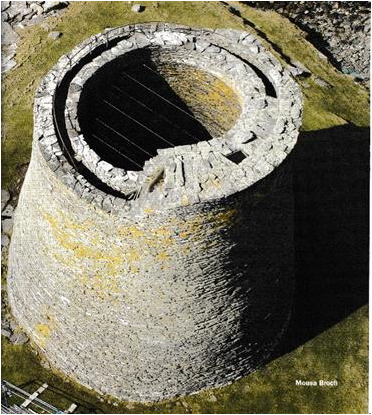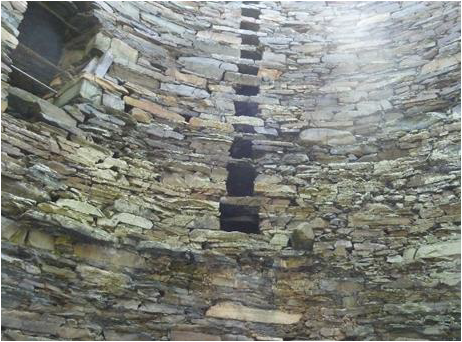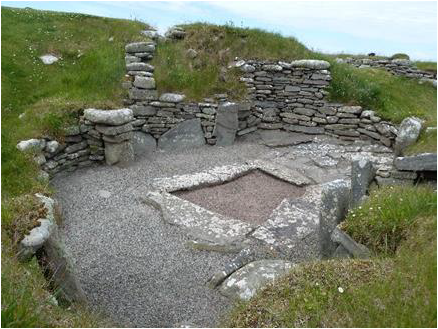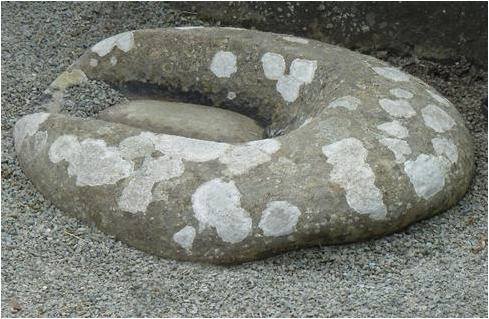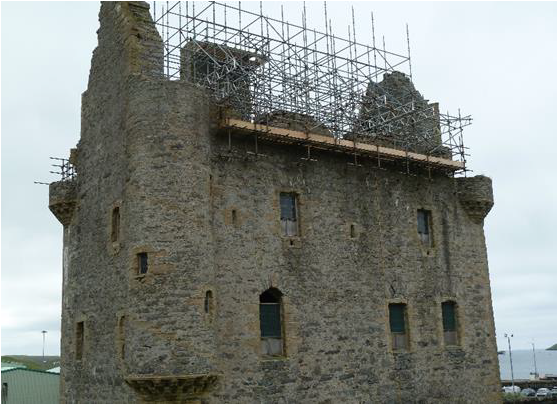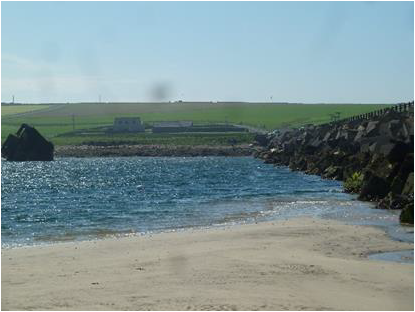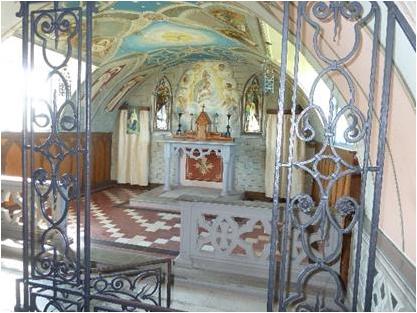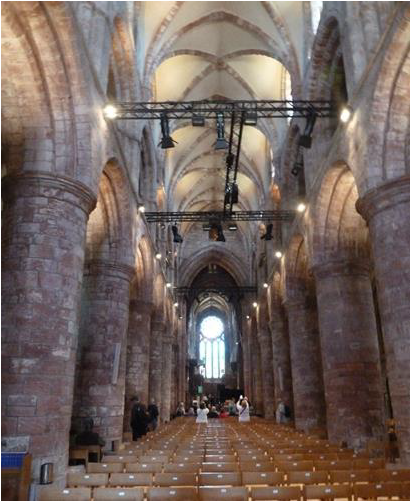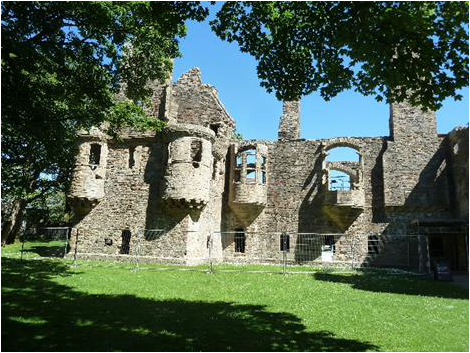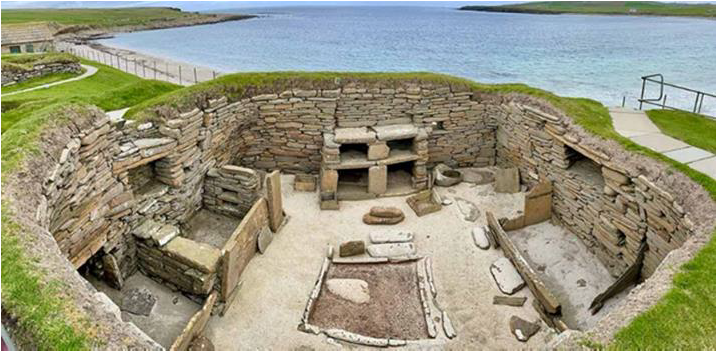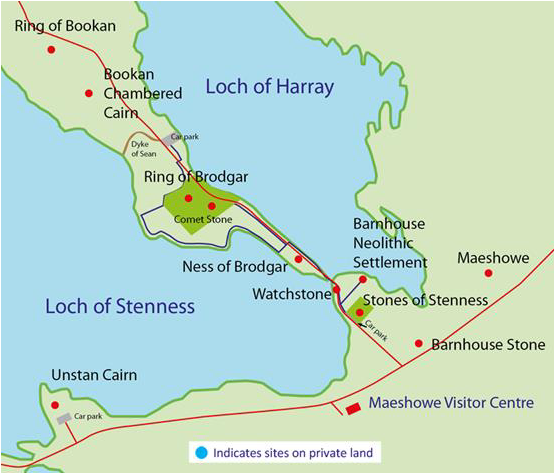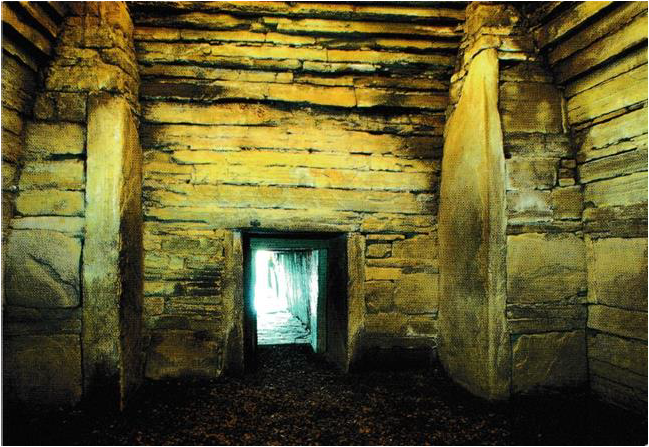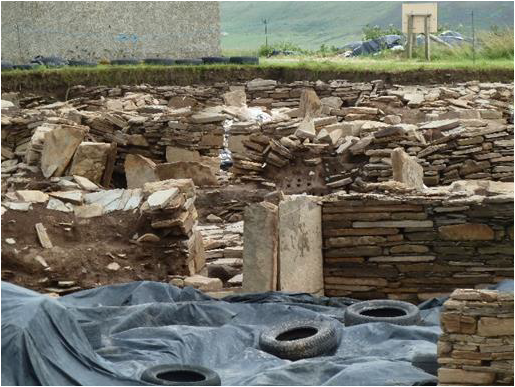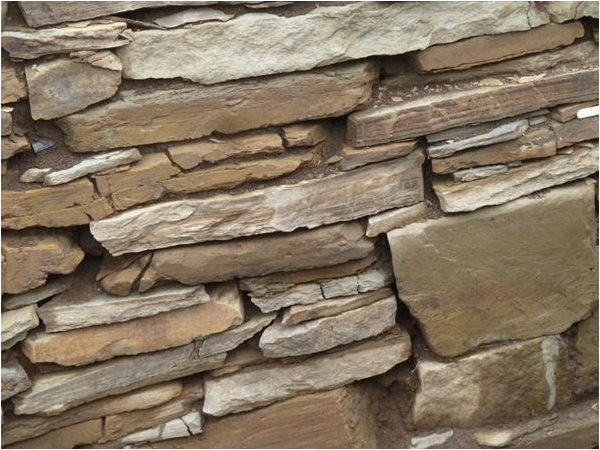
______________________________________________________________________________________________________________________________
No. 644 NOVEMBER 2024 Edited by Sue Willetts
HADAS DIARY – Forthcoming lectures and Events
The November 2024 lecture see below, will be in person, face-to-face, only, in the Avenue House Drawing Room.17 East End Road, Finchley N3 3QE, 7.45 for 8pm. Buses 13, 125, 143, 326 and 460 pass close by, and it is a five to ten-minute walk from Finchley Central Station on the Barnet Branch of the Northern Line. Bus 382 also passes close to Finchley Central Station. We also on the new SuperLoop Bus, SL10. Tea/Coffee/biscuits will be available for purchase after the talk.
Tuesday 12th November 2024 by Peter Masters. Research Fellow Cranfield University ‘Battle of Barnet 1471 – Where is the battlefield? New thoughts, research and surveys’
This talk will look at the history, archaeology and present thoughts on the Battle of Barnet. The recent research has revisited the documentary evidence suggesting a different interpretation of how the battle was fought. It has led to looking at the landscape in a new way supported by a research fund that involved the participation of volunteers within the community.
Tuesday 11th February 2025 by Nick Peacey on The Highgate Wood kiln’s site. See article starting p.2
Important notice about lecture slides: We have been advised that due to copyright reasons it will not be possible to take photographs during HADAS lectures taking place in Avenue House. Copyright regulations permit the use of visual material during lectures but does not extend to allowing copies to be made of lecturers’ slides. This also ensures there is no distraction for the speaker and audience members.
Avenue House Sunday morning working party meetings
The archaeology and heritage working sessions in the HADAS workroom at Avenue are generally held on Sunday mornings, from 10.30 am. HADAS members are welcome to attend – if this is of interest, please contact the Secretary to ensure the session will be taking place as occasionally these are cancelled.
HADAS Christmas Party Sunday the 1st of December 2024
We will be holding the HADAS Christmas party in the Salon at Avenue House from 2.30 pm on Sunday 1st December 2024. There will be a selection of seasonal food available as a finger buffet, and a quiz, raffle and cash bar. The price will be kept at the same as for last year at £20 per person. Booking forms have been sent out to members who are welcome to bring guests.
Hurry -there are only a few places left!
1 of 12
HIGHGATE WOOD – ROMAN POTTERY KILN Michael Hacker
This year’s Heritage Day in Highgate Wood saw the official opening of a new display devoted to the Roman pottery site found in the wood in the 1960’s. The display includes the newly restored remains of one of the best-preserved Roman pottery kilns found in London, now believed to be the only Roman pottery kiln on display in England. The Heritage Day events featured the successful firing of a replica Roman pottery kiln packed with pots made from clay dug in the wood.
Back in 1962 Tony Brown had observed a surface scatter of Roman pottery sherds in Highgate Wood. A series of summer excavations between 1966 and 1978, led by Tony Brown and Harvey Sheldon, revealed evidence of a significant Roman pottery production site. It was active for over 100 years between AD 50 and AD 160. It produced a range of cooking and fine tableware for the London market. The range includes a distinctive poppy-head beaker form with geometric, dotted barbotine decoration. Highgate ware has been found widely distributed at numerous sites in the London area. A full report of the excavations was published by Archaeopress in 2018. (1)
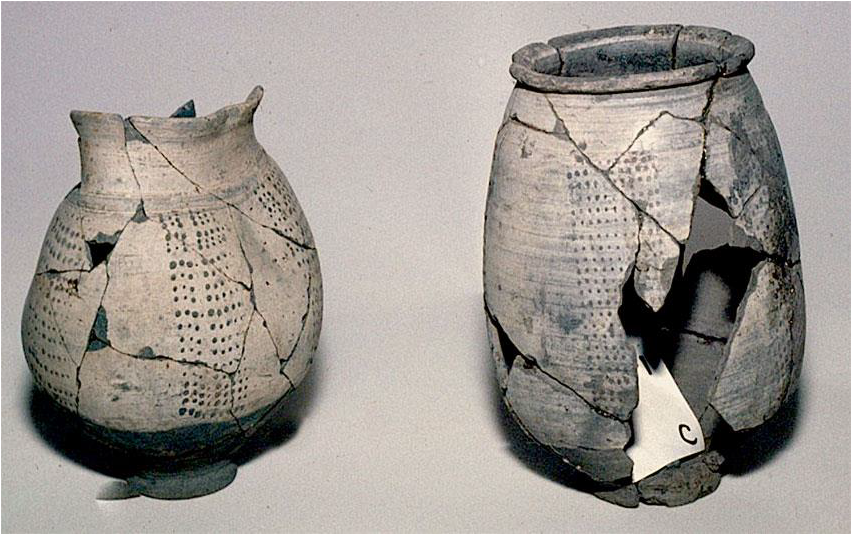
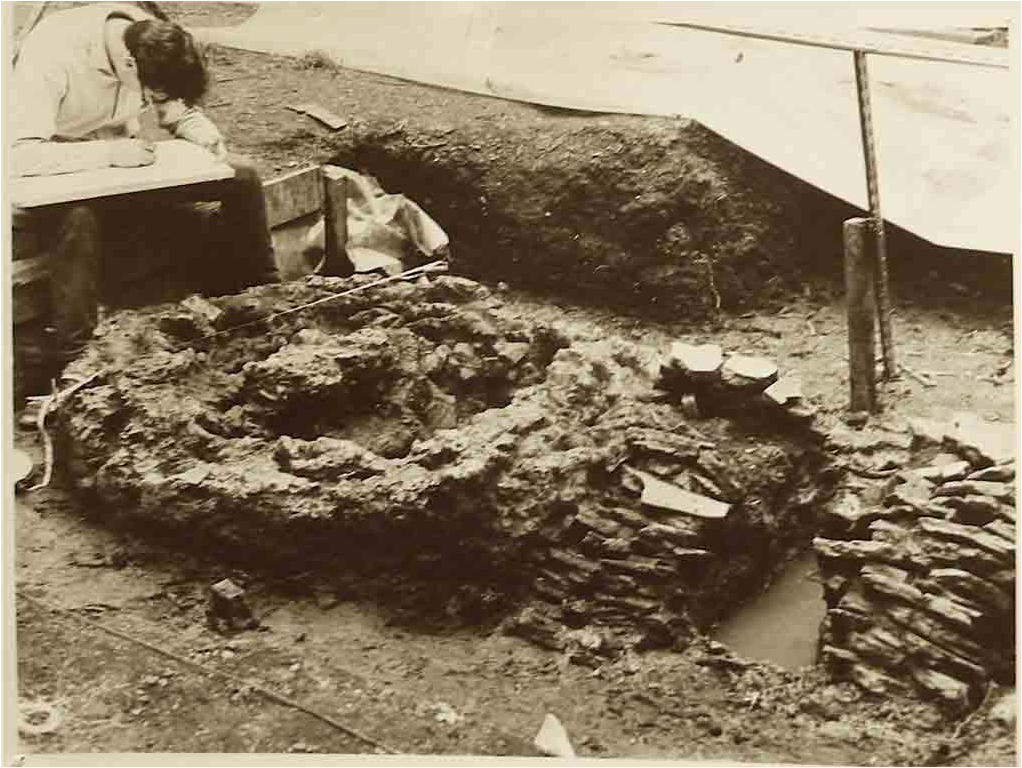
________________________________________
(1) Brown A. E. and Sheldon H. E. (2018) The Roman Pottery Manufacturing Site in Highgate Wood: Excavations 1966-78, Archaeopress (https://www.archaeopress.com/Archaeopress/download/9781784919788)
2 of 12
The excavations identified the remains of ten kilns. One of them, kiln 2, was particularly well preserved. After it had been recorded it was lifted and exhibited first in the Horniman Museum, then in Bruce Castle Museum, Tottenham. Unfortunately, around 1997, Bruce Castle found itself short of space and put the 21 pieces of the kiln in store. It lay there for nearly 30 years. Under the leadership of Nick Peacey and Harvey Sheldon, a voluntary community group, the Friends of Highgate Roman Kiln, (FOHRK), has now succeeded in having the remains of the kiln conserved and reassembled. FOHRK, with the aid of Lottery funding, worked in partnership with the City of London Corporation, owners of the Wood and Bruce Castle Museum, owner of the kiln. The kiln forms the central feature of the display in what will be, once the space is extended to accommodate buggies and wheelchairs, a substantial Visitor Centre. (https://www.highgateromankiln.org.uk/).
To coincide with the opening of the kiln display, FOHRK and the partnership (named Firing London’s Imagination) organised, the construction and firing of a replica Roman kiln, under the direction of Graham Taylor of Potted History (https://potted-history.co.uk/).
The construction of the kiln involved excavating a trench for the stoke hole and heating chamber. The excavated material, together with clay from the wood was used to build a wattle and daub superstructure for the kiln. The wattle reinforcement used hazel stakes and wands from the wood.
One identifying feature of the Roman pottery made in Highgate Wood is that it contains tiny glittering flecks of mica. The solid geology of the Northern Heights of London is an upper member of the London Clay Formation, known as the Claygate Member. This is a silty, micaceous clay. Whilst is had been assumed that the potters used locally sourced clay, the Claygate Formation is highly variable, some parts contain a large proportion of silt and sand and are not suitable for pottery production. The exact location of the clay used by the Roman potters had not been identified. However, geological input from HADAS member Peter Collins enabled a seam of clay to be identified that was considered suitable for pottery production.
A pit was machine excavated in the wood to obtain clay from this seam. This aim was to use this clay to make pots to be fired in the replica kiln. As the pit was close to the Roman pottery manufacturing site HADAS mounted an archaeological watching brief (Site Code: HI 024). In the event, nothing of any archaeological significance was observed.
3 of 12
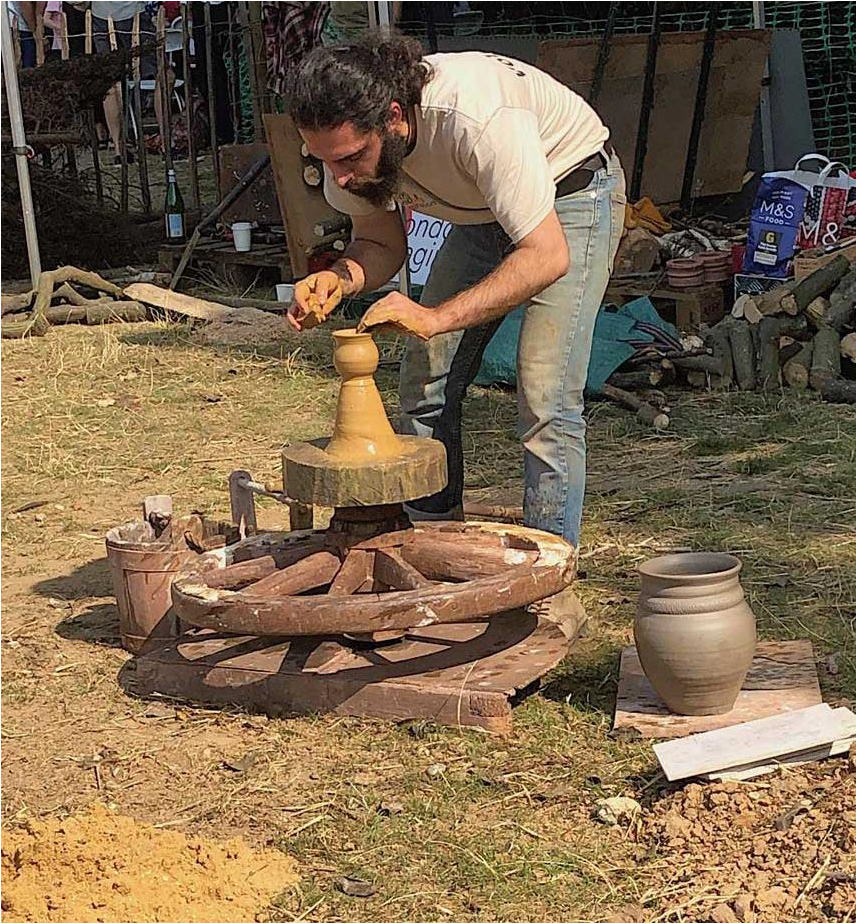
A local craft pottery (Turning Earth), under the guidance of Shem Morgan, used the clay from the pit to make a range of different forms of pot. (https://www.turningearth.org/n6). These were fired in the replica kiln as part of the Heritage Day activities. As hornbeam charcoal was one of the types of charcoal found in the excavated Roman kilns, hornbeam logs, harvested from the wood were used to fire the kiln. A maximum temperature of 915 degrees Celsius was reached after nearly ten hours of stoking. Virtually all of the nearly 300 pots in the kiln were fully fired, with very few breakages.
4 of 12
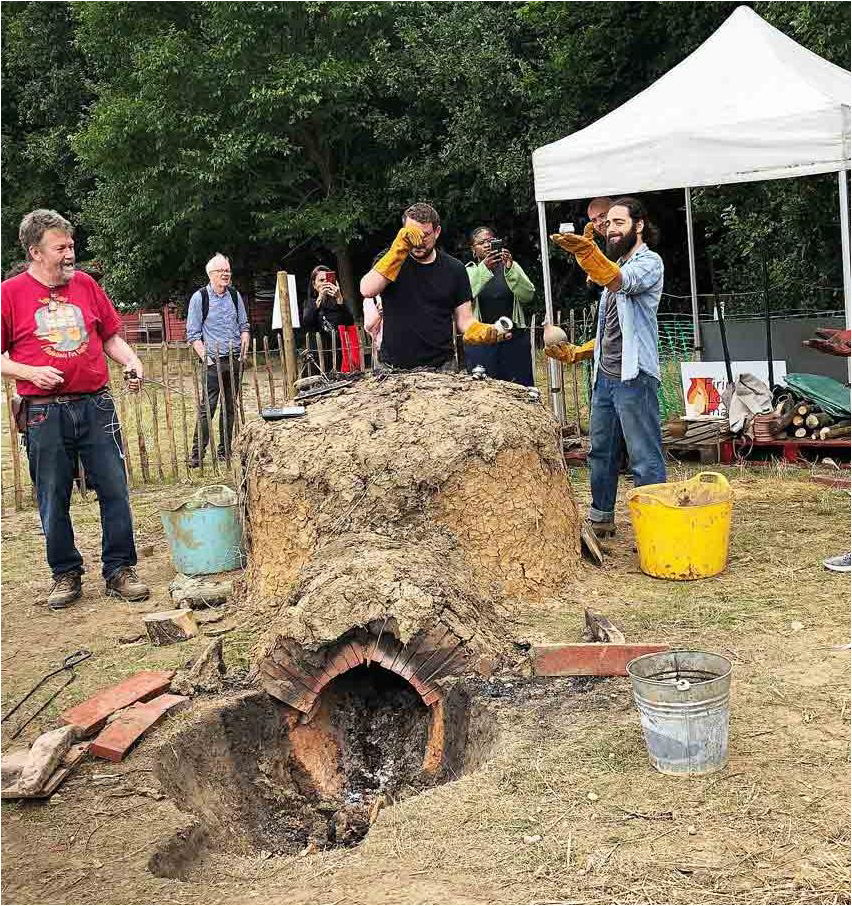
Unfortunately, Peter Collins died in August. He was not able to witness the events that confirmed that the seam of clay he had helped to locate was suitable for pottery manufacture and that it was probably the source of the clay used by the Roman potters. Peter had been an enthusiastic member of Jacqui Pearce’s finds class over many years. The course focussed on pottery finds from archaeological sites in London. Peter developed a particular interest in the Roman pottery manufacturing site in Highgate Wood and the geological and topographical factors influencing pottery production in North London in general. He was the lead author of a research paper on this topic, published by the London Geodiversity Partnership in 2018. (2)
Kiln 2 can be seen in the Visitor Centre in the centre of Highgate Wood. The replica kiln is located on the edge of the playing field adjacent to the Centre.
Highgate Wood is 12 minutes’ walk from Highgate tube station (Northern Line – High Barnet branch). Buses 43 and 134 stop on Muswell Hill Road on the edge of the wood. The wood is open every day from 07.30 to dusk.
_____________________________________
(1) Brown A. E. and Sheldon H. E. (2018) The Roman Pottery Manufacturing Site in Highgate Wood: Excavations 1966-78, Archaeopress (https://www.archaeopress.com/Archaeopress/download/9781784919788)
(2] Collins C. and Hacker M (2018) Highgate Wood Roman Pottery Kilns: Geological and Topographical factors influencing the location, London Geodiversity Partnership. (https://londongeopartnership.org.uk/reportsandresearch/#highgate)
________________________
5 of 12
An Archaeologist’s View of Orkney and Shetland Jean Bayne and Jennifer Taylor
SHETLAND
After an overnight ferry journey of twelve and a half hours from Aberdeen, we docked at Lerwick in Shetland. Our first visit with our knowledgeable guide, Peter Yeomans, was to the island of Mousa. It has a broch, an Iron Age stone tower which stand 13m high with a base diameter of 15m: the finest surviving example in Scotland. Brochs are peculiar to Scotland and 500 have been counted of which 141 are on Shetland. They are a distinctive shape and have inner and outer walls which allow for the construction of a staircase and upper chambers. They were built for defensive purposes as well as prestige.
Jarlshof was our next stop. Near the sea on the southern headland, it covers about 3 acres with settlements spanning 6,000 years of uninterrupted occupation from the Neolithic to the 1600s. It had ideal conditions: a good harbour, fresh water, fertile land for grazing animals and an abundance of stone for building. Moreover, the sea provided opportunities for fishing and trade. However, coastal erosion has destroyed some of the archaeology, including half of a broch. The remaining evidence was hidden by a sealed mound of sand until the 1890s when it was uncovered by storms. Since then, there have been excavations in the 1890s, 1930s and the 1950s.
Evidence for Neolithic habitation, Bronze Age settlements, Iron Age buildings, Norse and Medieval occupation have all been found, making Jarlshof an iconic and significant site. Only vestiges remain of a very early residential settlement in 2500 BC plus some pottery fragments extracted from a series of middens. The Bronze Age from 2000 BC is marked by an enclosure with stone walls around it. The houses within have a central hearth with small cells radiating from it. A smithy was added to one of the houses in 800 BC. Various artefacts such as a quern, stone tools and bone fragments have been found. A complicating factor is that later houses are often built on top of, or inside, earlier ones.
Iron Age people built similar but more spacious housing with stone entrance passages ad souterrains (underground stores). In the second and third centuries a new structure was introduced at Jarlshof: the Wheelhouse. These were houses where the roof was supported by radial piers of stone arranged like the spokes of a wheel. It is an internal structure and there were parts of 4 such houses found on the site. About this time textile production was occurring as spindles and weaving tools were discovered.
6 of 12
Also, evidence of an increasing range of animal husbandry including pigs, ponies, and dogs. Fishing and hunting were evident too and decorative articles like beads and pendants made from soapstone. Slate was also in use.
Viking raids began in Scotland around 800 AD. By the end of the 9th century a Norse dwelling appeared on Jarlshof: the long house. It was a long, low structure with a small kitchen with a hearth and oven and a separate main living area. It therefore had inner as well as outer walls. The settlement did not develop substantially but remained basically a farmhouse with a few buildings around it. Over the following centuries more houses were built and byres and outbuildings added. Fishing and pottery became increasingly important. It seems to have been a peaceful, sophisticated community blessed with a variety of resources and wide-ranging technologies and trade routes with opportunities for imports.
In the 13th century, a new type of farmhouse appeared, consistent with architectural developments in Norway itself. Shetland was part of Norway till 1469 when the King of Norway’s daughter married the King of Scotland and Shetland was her dowry. Thus, until then the inhabitants of the island had close links with Norway. The houses were modified as the climate became less hospitable and food more scarce. Large kilns which also acted as storehouses were added. Around 1500, the buildings were abandoned.
By the end of the 16th century, there was a new hall and a two-storey laird’s house on the Scottish model. A barn, kiln and outhouse were eventually added. They are the most recent structures, some of which are visible today as ruins. The notorious tyrant, Earl Patrick, lived on Shetland for a while but his main residence was in Scalloway, the old capital of Shetland, in an imposing castle which is now in need of restoration. The earl was executed in 1615.
The last visit on Shetland was to St Ninian’s island. A beautiful place accessed by a sandy causeway with sea on both sides; seals were seen basking in the sunlight nearby. We went up a steep hill to the remains of an ancient chapel perched on the hillside overlooking the bay. Christianity came to Shetland in the 6th century. The chapel had been built onto a Neolithic structure as evidence was found under the floor. Also under the floor was treasure. A box of silverware, including brooches and bowls was discovered by a schoolboy in 1958. No doubt it had been hidden from potential Viking raiders and never reclaimed.
7 of 12
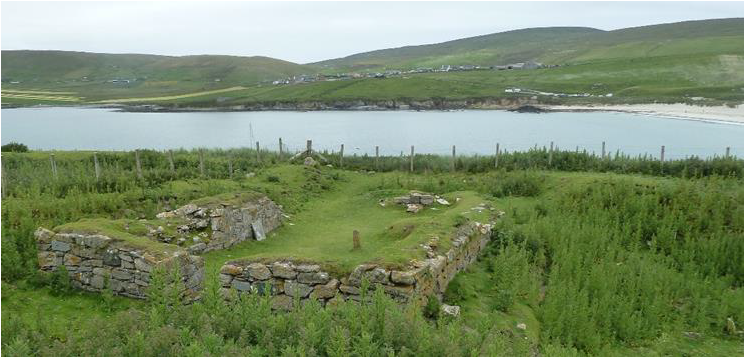
That evening we sailed for Orkney. I was captivated by Shetland: for me, it was a magical island of gentle, undulating hills dotted with white houses and framed by lovely beaches. We only had one cool rainy day. Seemingly Shetland has the sunniest summers in the UK and relatively low rainfall then too !
ORKNEY
Our first day in Orkney took us a few centuries ahead to the 20th century, driving round Scapa Flow where wrecks from the German High Seas Fleet we scuttled at the end of World War I. Seven of the 52 ships remain in the Flow and they were joined in 1939 by HMS Royal Oak, sunk by German torpedoes. A German submarine had crept into Scapa Flow, between the blockships which were meant to have made the Sound impassible to enemy vessels. Churchill ordered barriers to be built across all but one opening to the natural harbour.
Italian prisoners of war were camped nearby and created a chapel out of two Nissan huts which was decorated by one who was also a talented artist, Domenico Chiocchette.
We then moved onto Kirkwall where the centuries got confused again, visiting the magnificent 12th century St Magnus Cathedral and contemporary Bishop’s Palace. Rumour had it that the bones of local saint St. Magnus were thought to be lost but were found again behind a modest stone in the south aisle.
8 of 12
And then it was back again to Neolithic times as many of the artefacts from local excavations are held in the Orkney Museum just across the cathedral square.
Shetland may have given us balmy weather, but a real storm of rain and wind blew up on the last day when we went to visit some of the most remarkable Neolithic sites on Orkney. Starting with Skara Brae, first discovered in 1850, and a UNESCO heritage site which was first occupied in 2900 BC and abandoned around 2600 B.C. and may well have been larger, but the houses were built to a similar pattern and celebrated for having stone furniture still in place.
The real highlight of our visit was to the Neolithic sites in Stenness and Brodgar. Surveys have shown a monumental complex existed, centred around the Ness of Brodgar where building may have begun as early as 3500 BC.
9 of 12
Two sets of standing stones, the Ring of Brodgar and the Stones of Stenness bookend the area we visited and are assumed to have been areas of ritual worship. The chambered cairn at Maeshowe was built before 2700 BC. but was raided by Vikings in the 12th century, leaving behind a large collection of runic inscriptions (said to be the largest in one place in the world).
Two areas of likely occupation have been excavated in the area – Barnhouse, barely 0.5km to the south-east of the Ness of Brodgar, and the Ness itself. Barnhouse, discovered in 1984, had been badly damaged by centuries of ploughing. As a result, only the reconstructed lower courses of the structures are visible today – a ring of separate houses around a central space with construction and contents similar to those at Skara Brae. However, it was an important discovery because it demonstrated that the isthmus of Brodgar was not solely a ritual area. The village was abandoned around 2875 BC, maybe because of rising water levels in the Loch of Harray.
Our final visit was to the Ness of Brodgar and was to have been a real highlight with Nick Hall, the Director of the dig showing us around personally after the digging was finished for the day and other visitors had gone home. Unfortunately, although the rain had abated, the strength of the wind was such that we found it almost impossible to hear him as he enthusiastically took us around an extensive area of open excavations.
What we did find out from him in a more sheltered spot was that the Ness was first identified as a major archaeological site in 2002 when the farmer ploughed up a large unusually notched and rebated stone and the first trench was opened in April 2003. This was later than the UNESCO award or World Heritage Site for the other sites in Orkney and has meant that one of his most onerous tasks as Site Director is to raise the money to keep the work going. He is also very aware that the dig is revealing many layers of occupation, and the more they are unearthing, the more they are aware of the danger of damaging earlier remains. So, a difficult decision has been made to close the site for the future in the hope that better technology will be available in 20 years’ time to identify lower layers. We were therefore some of
10 of 12
the last visitors to the open dig (we were there in July) and it has now been covered and closed (at the time of writing in August).
However, Nick has plenty of work to do in the next twenty years. Living in the farmhouse on site, he will be writing up his finds for a long time yet.
OTHER SOCIETIES’ EVENTS Eric Morgan
Note: Not all Societies or Organisations have returned to pre-Covid conditions. Please check with them before planning to attend.
Saturday 2nd November, 10.30 am. – 4.30 pm. Geologists Association. Festival of Geology. Please note that the venue has now been changed to The Geological Society, Burlington House, Piccadilly, London. W1J 0BG. NOT at UCL. this time as shown in October Newsletter. See www.geologistsassociation.org.uk.
Friday 8th November, 7 pm. Hornsey Historical Society. Union Church Hall, corner of Ferme Park Road/Weston Park, London, N8 7EL. Charles Roach Smith. Talk by Dr. Michael Rhodes. For further details please visit www.hornseyhistorical.org.uk.
Saturday 16th November, 11 am. – 5.30 pm. L.A.M.A.S. Local History Society Conference. Wilberforce Room, London Museum Docklands, West India Quay, Hertsmere Road, London E14 4AL. Fashion, Clothing and Textiles in London’s History. Including presentations of publications awards for 2023. Afternoon refreshments to be provided. Tickets standard price £17.50 or £20 on the day if available (cash only). For further details please visit www.lamas.org.uk.
Friday 15th November, 7 pm. C.O.L.A.S. St. Olave’s Church, Hart Street, London, EC3R 7NB. Talk also on zoom, on 81 Newgate Street, The Former GPO site, revisited. Talk by Kathy Davidson (P.C.A). Book via Eventbrite, visit www.colas.org.uk. HADAS may send out link details to its members. Visitors – £3 payable at the church.
Thursday 21st November, 8 pm. Historical Association – Hampstead and N.W. London Branch. Fellowship House, 136A Willifield Way, London, NW11 6YD (off Finchley Road, Temple Fortune). The Revolting French – France since 1789. Talk by Professor Pam Pilbeam who investigates the impact of the revolution on the French from 1789 to its centenary in 1889. Hopefully, also on Zoom. Please e-mail Mandy Caller on mandycaller@gmail.com or telephone 07818 063594 for details of link and how to pay (there may be a voluntary charge of £3). Refreshments available afterwards.
Wednesday 27th November, 7.45 pm. Friern Barnet and District Local History Society. North Middlesex Golf Club, the Manor House, Friern Barnet Lane, London, N20 0NL. The Fire of London. Talk by Peter Mansi. Please visit www.friernbarnethistory.org.uk. Non-members pay £2. Bar available.
Saturday 30th November, 10 am. – 4pm. Amateur Geological Society North London Mineral, Gem and Fossil Show. Trinity Church, 15 Nether Street, London, N12 7NN (opposite Finchley Arts Depot, Near Tally Ho Pub). Refreshments available. Admission £2. For details www.amgeosoc.wordpress.com.
Tuesday 10th December, 6.30 pm. L.A.M.A.S. Also on Zoom. Book on Eventbrite via website www.lamas.org.uk/lectures/html non-members £2.50. The Southwark Deep Shelter from Tube Line to Nuclear Armageddon. Possibly the largest civilian air-raid shelter constructed during WW2 using disused tube tunnels under Borough High Street – examines the development, planning and use of the shelter during the war and proposals for its post-war use as a nuclear shelter and its fate. Talk by Dr. Chris Constable, Borough Archaeologist, London Borough of Southwark.
11 of 12
Tuesday 10th December, 8 pm. Historical Association. North London Branch. Jubilee Hall, Address as for E.A.S. Friday 8th November. Richard III and the Battle of Bosworth. Talk by Professor Anne Curry. Non-members £2 payable at the door.
Tuesday 10th December, 8 pm. Amateur Geological Society. Talk on Zoom. The Thames Through time. The history of an ice-age river. Talk given by Ian Mercer (Essex Rock and Mineral Society). By digging into the landscape around the County of Essex shows evidence in the land and even in church walls. For details of link please visit www.amgeosoc.wordpress.com.
Friday 13th December, 7.30 pm. Enfield Archaeological Society. On zoom. Medieval Pottery. Talk by Jacqui Pearce (HADAS President). Please visit www.enfarchsoc.org for further details and link.
****************************************************************************************************************
With many thanks to this month’s contributors: Michael Hacker, Eric Morgan, Jean Bayne and Jennifer Taylor.
****************************************************************************************************************
Hendon and District Archaeological Society
Chair Sandra Claggett, c/o Avenue House, 17 East End Road, Finchley N3 3QE
email : chairman@hadas.org.uk
Hon. Secretary Janet Mortimer 34 Cloister Road, Childs Hill, London NW2 2NP
(07449 978121), email: secretary@hadas.org.uk
Hon. Treasurer Roger Chapman, 50 Summerlee Ave, London N2 9QP (07855 304488),
email: treasurer@hadas.org.uk
Membership Sec. Jim Nelhams, 61 Potters Road, Barnet EN5 5HS (020 8449 7076)
email: membership@hadas.org.uk
Website: www.hadas.org.uk
12 of 12

